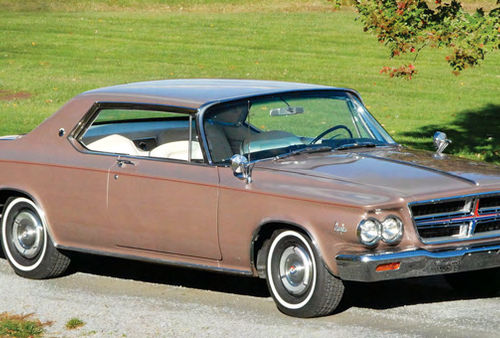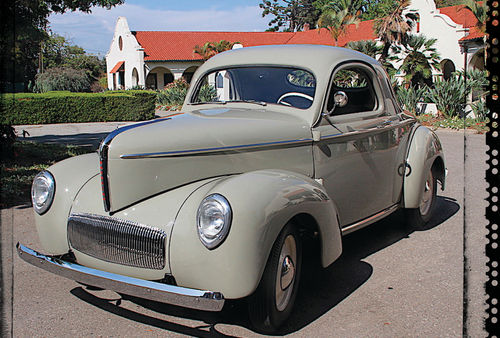A long-term search for a rare 1910 Selden automobile
My interest in the Selden was whetted many years ago, and I have spent the past four decades searching for and restoring a 1911 model. Today I am pleased to be one of the six known owners of this significant vehicle.
Automotive history was made when George Baldwin Selden successfully patented the gasoline automobile in 1895, an action that provoked a lengthy court battle won by Henry Ford in 1911. My interest in this uncommon car was a natural, given the Selden’s historical importance and the fact they are of “local manufacture” to me (having been produced in Rochester, New York, about 35 miles from my home in Leicester).
My involvement began in 1956 when I heard of an old brass car on an estate near Avon, New York, a small town about 20 miles from Leicester. It turned out to be a 1910 Selden Model 35 torpedo that belonged to none other than Henry R. Selden, the son of George B. Selden. Unfortunately, Henry Selden did not wish to sell the car. “No, the Selden is not for sale as it is the only material thing I have left from my father’s company,” was the reason given.
Conversation with Henry Selden revealed he had, on numerous occasions, been in the company of Henry Ford Sr. when he and his brother, George Jr., traveled with their father to Detroit on business. He spoke highly of the elder Ford at first, but as our conversation started to circle around the manufacturing of the Selden automobile, I detected a sense of bitterness toward the business success of the Ford Motor Co. and the failure of the Selden Motor Vehicle Co. (The last Selden cars were built in 1914 and truck manufacture ended in 1932.) Although Mr. Selden did not wish to sell me the car, the meeting and conversation with him was a memorable occasion for my younger brother Chris and I.
After Henry Selden’s death in 1970, the 1910 car passed into the hands of a Rochester family I have known for many years, and is garaged with them in its unrestored condition.
Meanwhile, in 1962, a broker located the only known example of the 1912 Selden, a roadster. This car also was found in the Rochester area and was purchased by the City of Rochester Fire Department for use as a battalion chief’s car. It was, of course, painted fire engine red for this duty. The car later was sold to Bill Harrah in Reno and, after a total restoration, it occupied a prominent spot in his collection. After Harrah’s death, when the collection was scaled back for the National Automobile Museum, the chief’s car was among those retained.

In the mid-’80s another 1910 Selden came up for sale, this time in the Midwest, but my inquiry showed it to be rather incomplete and having sustained some extensive and very costly-to-repair damage. I decided to pass on this one, and it currently is located in California. Another 1910 was recently given a professional restoration and is part of a collection in Oklahoma.
But there still was one more 1910 Selden in the Rochester area. It had been discovered in 1953 in a barnyard east of the city and was badly deteriorated and incomplete at the time. The new owner had fashioned a homemade body, performed a primitive restoration, and then enjoyed the vehicle. After his death, the car passed into the hands of his son and all my efforts to purchase it were turned away.
The car was finally sold to another person in 1987. Luckily, it stayed in the Rochester area and I was able to buy it in 1991.
Early in the negotiations, I found the car had been incorrectly titled and was actually a much-scarcer 1911 model, originally built as a Model 40R Varsity Roadster. Shortly after my purchase, I was contacted by a hobbyist/collector in New Hampshire who also had just purchased a 1911 Varsity Roadster. His car had been in the hands of a New England owner since 1939 and was in excellent original condition. Speak of a coincidence, in 1990 no ’11s were commonly known, and a year later two had been identified.
Research into my car’s origin showed it originally was bought by Fred Todd, a prominent manufacturer and early day entrepreneur in Rochester. Todd used the Selden as a business car and also owned a 1912 Peerless 7-passenger touring car that was the chauffeured family auto. Through information and photos supplied by Todd family members as well as more digging into the auto’s history, I learned it had been abandoned outdoors on the Todd’s fruit farm for about 35 years. The western New York seasonal changes had not been kind to the sheetmetal and wooden body framing. A few metal pieces were salvageable, but the wood was rotted beyond hope, with some components unusable even for patterns.
The first order of business was the need for an authentic body. I had some discussion with auto body builders, but came away with the feeling that my desire for authenticity was going to be compromised. At this point, I decided to build the body myself, basing my work on the 1911 in New Hampshire and the 1912 in Reno, which has the same body but different fenders. I started the project in my home workshop and, .after several hundred hours of my spare time, the body was completed. The body tins were rolled on a century-old set of slip rolls that performed as they did when new. The wooden frame was made from oak and ash and was built using the New Hampshire body as a pattern. Upon completion, a precise duplicate was ready for paint preparation.

Some of the mechanical restoration was sent out to various craftsmen and machine shops. The engine is a four-cylinder, cast in pairs, with a 4.75-inch bore and a 5-inch stroke, generating 48 brake horsepower from its 356-cubic-inch displacement. The engine rebuild required new pistons .030-inch oversize to fit the rebored cylinders, reconditioned connecting rods, and a reground camshaft. New Babbit mains were poured and line bored to mate the reground crankshaft. New valve seats and valve guides were installed. The valve stems were hard chromed and re-ground to standard.
As the engine was being assembled, the wheels were re-wooded at the wheelwright, and the square tube radiator core was fabricated. The leather on the cone clutch was replaced in 1954 and all it took was some neatsfoot oil to freshen it up. Inside the transmission, all the bearings were good (tapered and fully adjustable), but second gear was badly chipped, necessitating a replacement. A new gear was cut from a better grade of steel, and today it is superior to the original. The differential was rebuilt with modern bearings and seals. The brake drums were questionable because they had become severely misshapen over the years. I fabricated new steel drums and cut them on a lathe to their 14-inch diameter. Some of this work, such as the brakes, was necessary to produce a road-worthy, dependable and safe car.
As is usual with antique vehicles that spend years sitting neglected in a field, the Selden’s brass lights and horn were missing. A nationwide search was instituted for the correct lamps and I located the kerosene sidelights in South Dakota and the matching taillamp in Chicago. The headlamps were supplied by an Oklahoma man whom I met while attending a Horseless Carriage Brass Meet, and the correct horn was purchased in a local antique shop. All of these items, plus many more incidentals, were restored and set aside to await their turn to be added to the car.
Now I was assembling the car, enjoying the progress, and visualizing the complete product. The final paint work was done in my brother’s Ford bodyshop and I made a “buck” for the body so it could be moved around while I was working on the frame and running gear. The first move was to the upholstery shop. When it came back, it was finish trimmed and sent to the pinstriper. During this time, I had completed the running gear and was ready to fit the body. This was completed in August of 95 and the car was shipped back to the upholstery trimmer for the top. He insisted that the car be setting on its wheels when the top was fitted as this would insure an excellent installation. While the top and side curtains were being fashioned, I prepared the fenders for finish paint and fabricated new splash aprons.
By last May the car was complete enough for a startup and fine-tuning prior to the hood and fenders being installed. Anxious to show my car, I had entered it in the AACA Spring Meet scheduled for June in Johnstown, Pennsylvania. The deadline was approaching fast and numerous last-minute details requiring many hours of work remained.
The work was finished in time and I received a National First Prize Award for my efforts. It was a fine culmination to five years’ worth of research, study and hands-on restoration as well as my decades-long search for one of the few remaining Selden survivors.
















